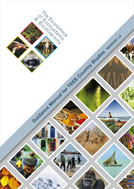A TEEB Country Study (TCS) identifies the ecosystem services that are vital to meeting the country’s policy priorities and makes recommendations on how these services can be integrated into policies. These recommendations depending on the country context can include policies for poverty alleviation, subsidy reform, land use management, protected area management, securing livelihoods, investment in natural infrastructure restoration and national accounting to include natural capital.
TEEB studies can help countries answer these questions:
- What is the natural capital in my country and what is driving change?
- Do we measure and understand our natural capital?
- To what extent are the values of nature integrated into decision-making?
- What are the issues that need policy attention?
- What are the policy tools and decision options that offer solutions?
TEEB Country Study six-step approach:
STEP 1. Define objectives of the country study by specifying & agreeing on key policy issues with stakeholders
STEP 2. Identify the most relevant ecosystem services
STEP 3. Define information needs and select appropriate methods
STEP 4. Assess and value ecosystem services
STEP 5. Identify and outline the pros and cons of policy options, including the distributional impacts
STEP 6. Review, refine and report
 The Guidance Manual for TEEB Country Studies provides both technical and operational guidance on how countries may conduct a TEEB Country Study. It outlines the various steps that may be taken to initiate and implement a country study, communicate its findings, and implement the recommendations of the study.
The Guidance Manual for TEEB Country Studies provides both technical and operational guidance on how countries may conduct a TEEB Country Study. It outlines the various steps that may be taken to initiate and implement a country study, communicate its findings, and implement the recommendations of the study.
